THE TWO MOST INVASIVE PLANTS IN TEXAS
They’re both pretty enough. But they seem to be trying to take over the world, at least where I live. Let me help you identify them.
Chinese privet
Chinese privet (Ligustrum sinense) is in full bloom in North Texas at this time. It has probably finished blooming farther south. Some people like the fragrance. Others of us have other opinions.
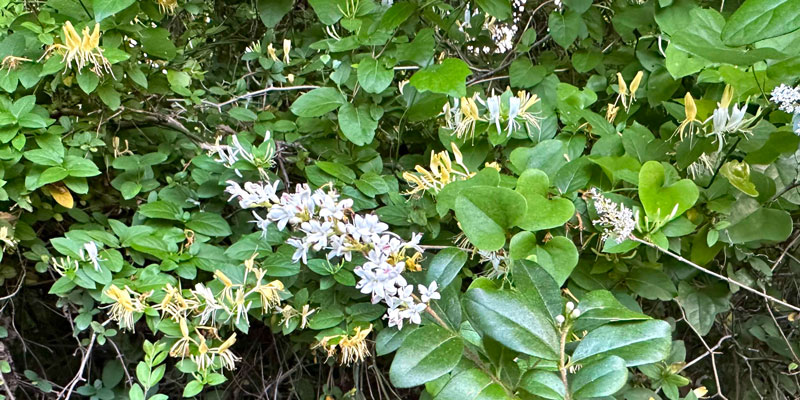
But butterflies and honeybees are crazy about privet, which is probably why you see it laden with thousands of fruit each winter.
Simple math tells you that each seed can pass through a bird, get planted and fertilized all in one process, grow and soon start producing its own babies – you’re likely to have thousands or millions of little plants within just a few years.
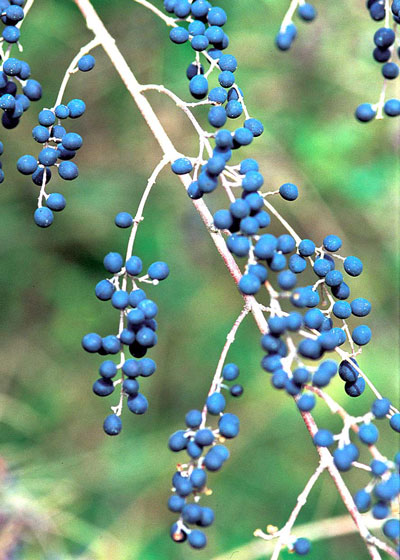
And that’s exactly how it all works. This plant germinates in woodlands. It roots ferociously and soon overruns much of the existing native undergrowth to the point that you have the taller trees (often post oaks) and a thicket of Chinese privets beneath them. Little else survives.
It’s a challenge to remove them. Brush-hogging is a good start, followed by applications of brush killer spray onto the tender new growth. However, you must read and follow label directions carefully to avoid damage to the native forest.
Or … the better way is simply to avoid this plant in the first place. Use a well-sharpened hoe to eliminate the young seedlings as they emerge. Keep your beds mulched with compost. Encourage your neighbors to remove any that they have coming up in their yards and vacant properties.
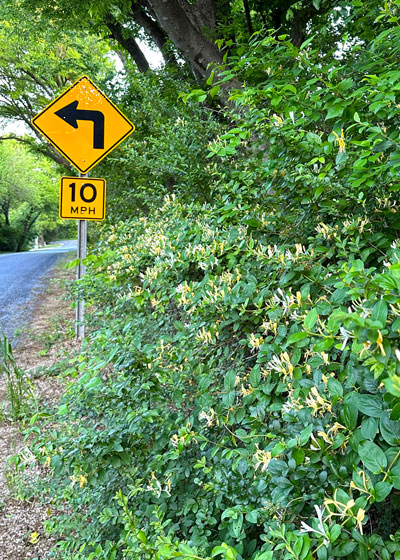
Japanese honeysuckle
This familiar vine, Japanese honeysuckle (Lonicera japonica) is in full bloom on our neighbor’s fence right now. It takes me back to my childhood and sucking on the little flowers to withdraw the nectar. (In retrospect, I think that nectar thing is highly overrated, but maybe my sense of smell is out of order because I hung out around privet blooms.)
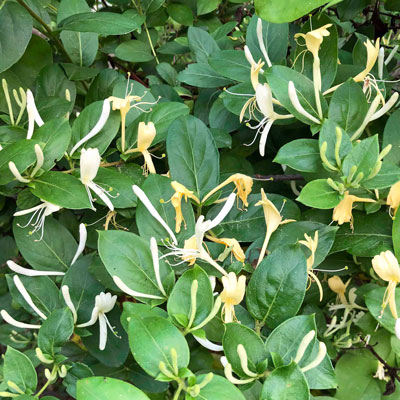
Honeysuckle also produces black, juicy fruit with the same attraction to birds. They plant its seeds just about everywhere. And when its seeds sprout, they start twining up shrub and tree trunks almost immediately. Before you know it, they’re shrouding the plants in shade and choking their trunks like so many boa constrictors. Once the vines die or are taken down, squeeze marks are left behind.
As with the privet, it’s best simply to avoid Japanese honeysuckle entirely. People start growing it because they love the white blooms and the fact that they fade to yellow on their second and third days. They promise themselves that they’ll trim off the fruit as it forms, but they never remember to get the job done, and soon they’re inundated in scrambling honeysuckle vines.
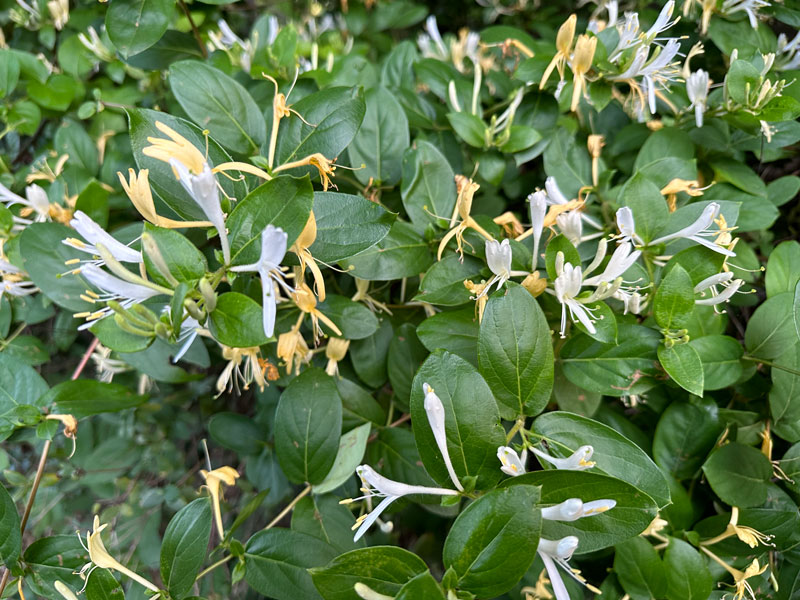
If I find honeysuckle coming up in one of my shrub plantings I trace it back to the soil line. I’ll use my loppers to cut it off where it emerges from the ground.
Since they’re slimy and impossible to pull loose, I clip the stems into small sections so I can “unscrew” them from my shrub’s stems. If I can use a sharpshooter spade to pluck up the stump and roots of the honeysuckle, I’ll do so. Otherwise, I keep a close eye on the stump and spot-treat with a broadleafed weedkiller applied directly onto the vines’ succulent new growth. I’m ultimately careful not to let the spray drift onto my desirable plants.
